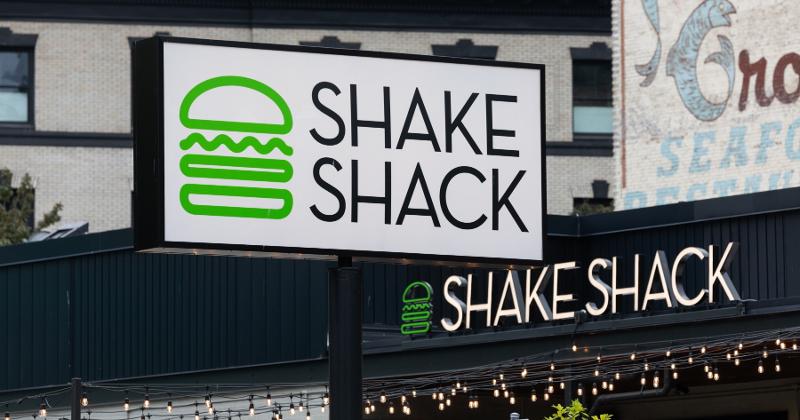
Shake Shack is moving to a bespoke labor deployment model that CEO Rob Lynch said could be a game changer.
In fact, the fast-casual burger chain joins a number of peers making similar moves toward using AI-driven technology to more accurately predict the team members needed in each restaurant and when to deploy them.
The CEOs of Chipotle, Sweetgreen and Cava in recent months have all described using similar types of technology as they look to improve profitability at a time when macroeconomic pressures are keeping a lid on menu price increases.
In a presentation at the Goldman Sachs Global Retailing Conference on Wednesday, Shake Shack’s relatively new CEO Rob Lynch outlined the various opportunities the brand has to grow sales, including creating a new loyalty program, streamlining operations, and lowering buildout costs, which he outlined at the chain’s second quarter earnings last month.
That’s all low-hanging fruit, said Lynch. But he and CFO Katie Fogertey said the new labor model—which is unique to Shake Shack—will also be fundamental in improving throughput and creating a better experience for guests.
Traditionally, Shake Shack units used sales to determine staffing levels at each restaurant, Lynch said.
“It used to have $1 million in sales equals this amount in labor, and GMs were deploying it however they saw fit. Now we are giving them guidance, ‘Based on your business, here’s what you should be scheduling by hour.’”
Many bigger companies may be doing this already, he noted, but for Shake Shack, “this could be a game changer for us.”
The new more-sophisticated system considers factors like each restaurant’s channel mix, whether delivery, drive thru, dine in, as well as the menu mix—certain items require more labor to prepare than others, added Fogertey.
“We’re also looking at peaks in the day,” she said. “Some of our restaurants operate pretty even throughout the day, but then we have restaurants that do very heavy lunch, or very heavy dinner. Those just have different staffing requirements. So with time and motion study, we’ve put up a bespoke model for each of our Shacks.”
The technology is increasingly being mentioned in earnings calls and presentations, in fast casual but also other segments.
Chipotle’s multi-year effort to speed throughput, for example, has also included a focus on labor deployment and getting “aces in places,” as former CEO Brian Niccol used to say.
Cava is testing a new labor model that is expected to be in 75 restaurants this fall with the hope of rolling it out systemwide next year. CEO Brett Schulman said the focus is on reallocating hours so team members are “in the right places at the right moments during their shift,” and prepping during down time.
So far, the effort has also helped managers focus on coaching, rather than having to jump into position to fill line gaps at peak hours, he said.
Sweetgreen CEO Jonathan Neman also hinted last month that the chain was working on labor deployment.
“We’re working on some things around labor deployment that we think can help us, not just on hospitality and throughput, but also in terms of continuing to leverage that labor line,” he said during the company’s second quarter earnings call in August.
For Shake Shack, Lynch argues that it’s going to be such operational tweaks that will grease the path for future sales growth.
For the June 26-ended second quarter, Shake Shack grew same-store sales 4%, but that was largely a result of menu price increases. Traffic was down 0.8%.
The chain also last week announced the permanent closure of nine underperforming restaurants in California, Texas and Ohio, which were the first the brand has shuttered for non-construction reasons.
Lynch on Wednesday dismissed the impact of the closures, describing the move as simple portfolio management.
“That was just me coming in and saying, ‘Okay, you’ve never closed a restaurant before. Does that mean every restaurant we have is awesome?’” said Lynch. “These were just nine that weren’t delivering on the financial performance we wanted them to, and we didn’t see a path for getting them there.”
Members help make our journalism possible. Become a Restaurant Business member today and unlock exclusive benefits, including unlimited access to all of our content. Sign up here.